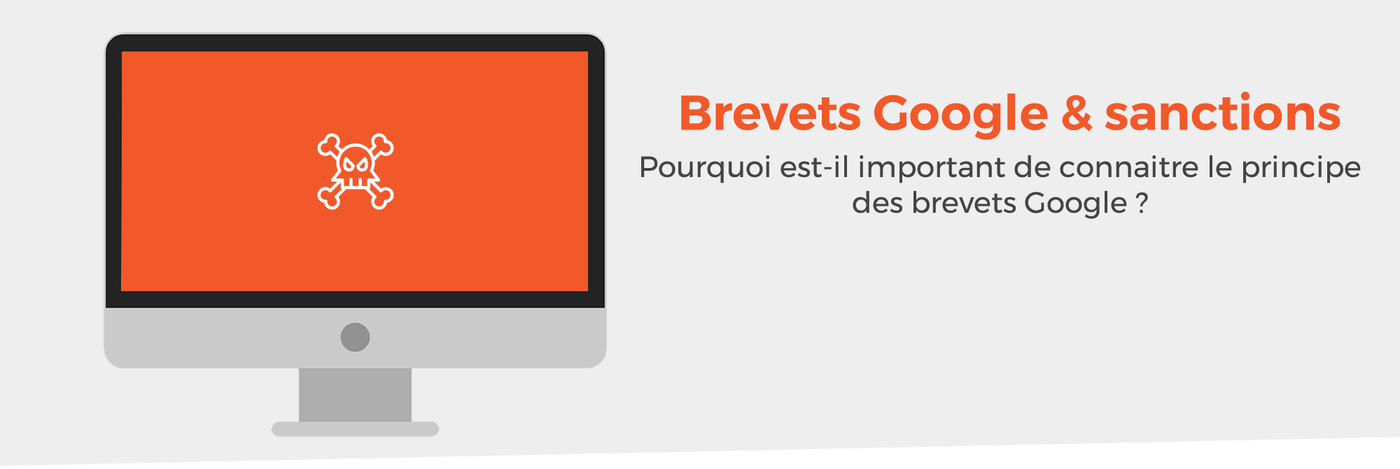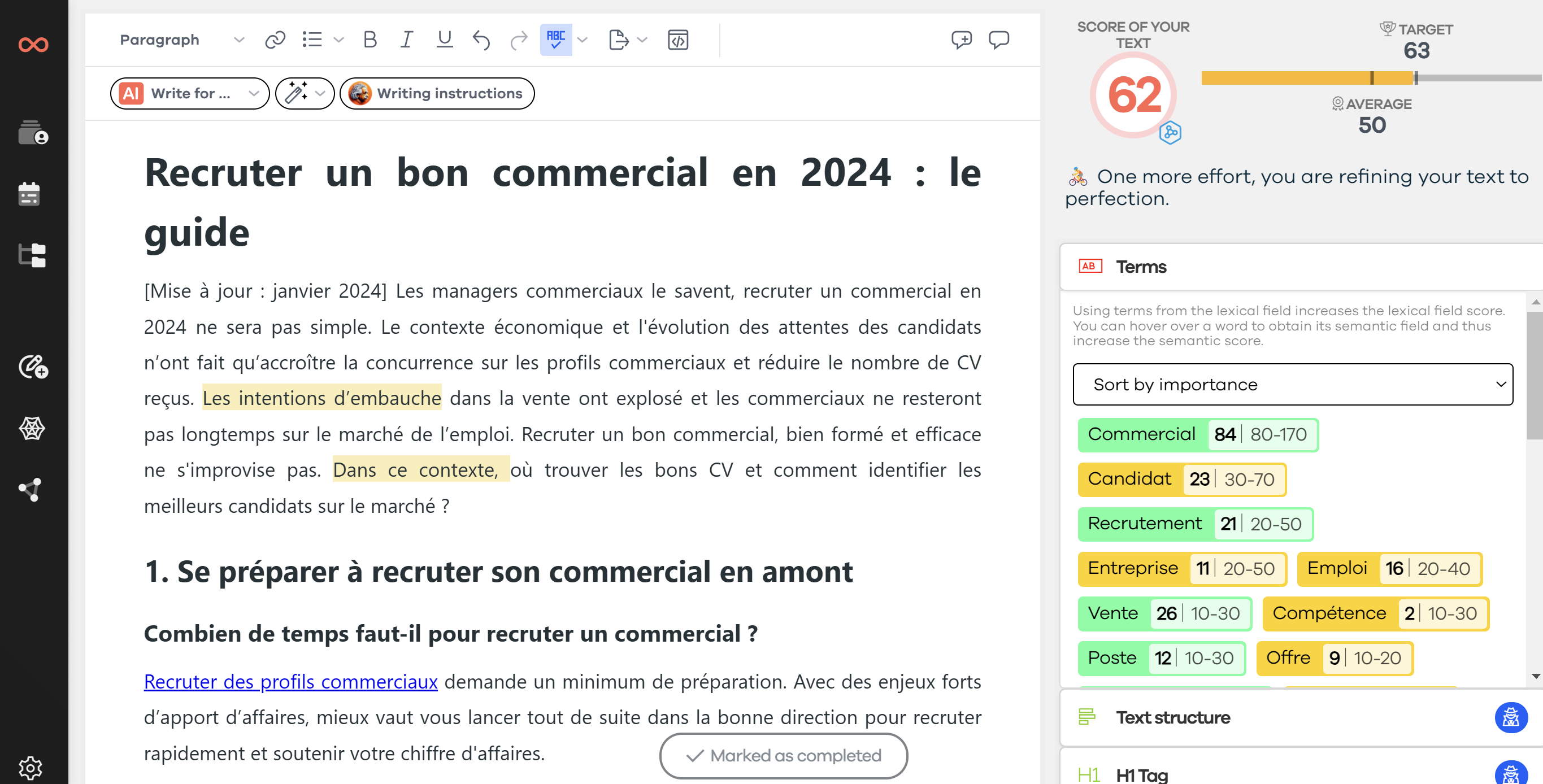Como profissionais de SEO, sabemos muito sobre o Google. As atualizações do algoritmo geralmente são baseadas em patentes publicadas. O objetivo fundamental das atualizações é eliminar práticas de SEO duvidosas.
Por práticas duvidosas, entendemos qualquer prática que tente explorar falhas no algoritmo do Google para obter uma classificação melhor nos motores de busca. O Google penaliza os sites que fazem isso, pois o conteúdo fornecido aos usuários em suas páginas de resultados de pesquisa geralmente é de qualidade medíocre, o que significa que os resultados do mecanismo de pesquisa também sofrem.
Todos que trabalham com SEO há vários anos conhecem bem as principais táticas Black Hat que o Google penaliza (veremos alguns exemplos concretos mais adiante no artigo).
🚀 Leitura rápida: 3 patentes do Google para evitar penalidades de SEO
- Patente de 8 de outubro de 2013 sobre "content spinning": reescrita automática de páginas idênticas para evitar conteúdo duplicado.
- Patente de 13 de dezembro de 2011 sobre "keyword stuffing": excesso de palavras-chave para posicionar um site em uma única palavra.
- Patente de 5 de março de 2013 sobre "cloaking": camuflagem de conteúdo para enganar o algoritmo.
❓ Por que a forma como o Google identifica as táticas Black Hat é importante?
Porque você não quer cometer acidentalmente erros de SEO que resultem em penalidades do Google! Eles pensarão que você está tentando tirar proveito do sistema.
Na verdade, você simplesmente cometeu alguns erros de SEO caros porque não sabia. Para entender melhor como o algoritmo do Google identifica práticas ruins de SEO (e assim entender melhor como evitar cometer erros de SEO), você deve revisar as patentes do Google relacionadas a algumas das táticas Black Hat mais comuns.
💫 Content spinning
A patente em questão: "Identifying gibberish content in resources" (patente de 8 de outubro de 2013)[1]
Um site reedita a mesma publicação centenas de vezes com o objetivo de aumentar o número de links e tráfego, evitando que seja considerado conteúdo duplicado. Alguns sites até conseguem gerar receita com esse tipo de conteúdo, por meio de links publicitários.
No entanto, como a reescrita de conteúdo é uma tarefa bastante tediosa, muitos sites recorrem a softwares de redação automática capazes de substituir automaticamente nomes e verbos. Isso geralmente resulta na criação de conteúdo de péssima qualidade ou, em outras palavras, em um texto sem sentido.
A patente explica como o Google detecta esse tipo de conteúdo identificando frases incompreensíveis ou incorretas contidas em uma página da web. O sistema que o Google usa se baseia em diferentes fatores para atribuir à página uma pontuação contextual: é o "gibberish score", literalmente a pontuação do texto sem sentido.
O Google usa um modelo de linguagem capaz de reconhecer quando uma sequência de palavras é artificial. Na verdade, ele identifica e analisa os diferentes n-grams em uma página e os compara com outros agrupamentos de n-grams em outros sites. Um n-gram é uma sequência contígua de elementos (neste caso, palavras).
A partir daí, o Google gera uma pontuação de modelo de linguagem e uma pontuação de "query stuffing". Trata-se da frequência de repetição de certos termos no conteúdo. Essas pontuações são então combinadas para calcular o gibberish score. Este último é então analisado para determinar se a posição do conteúdo na página de resultados deve ser modificada.
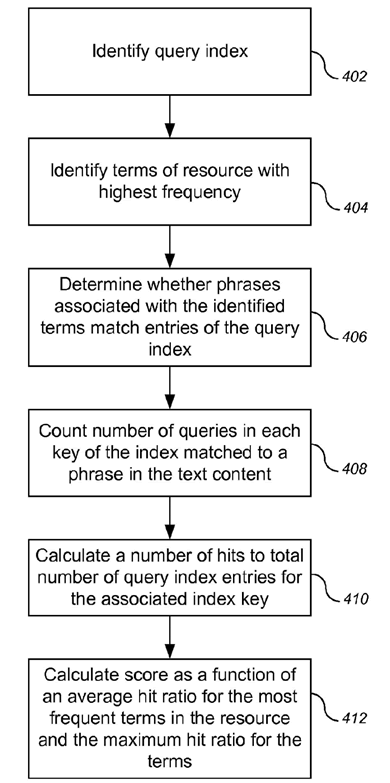
🔑 Keyword Stuffing (excesso de palavras-chave)
A patente em questão: "Detecting spam documents in a phrase based information retrieval system" (13 de dezembro de 2011)[2]
Houve um tempo em que muitas páginas continham pouca ou nenhuma informação útil, pois repetiam palavras-chave sem se preocupar com o sentido das frases. A atualização do algoritmo permitiu que o Google freasse essa estratégia.
A patente
A maneira como o Google indexa páginas com base em frases completas é extremamente complexa. Abordar essa patente (que, aliás, não é a única sobre o assunto) é um primeiro passo para entender o impacto das palavras-chave na indexação.
O sistema do Google que permite a compreensão das frases pode ser dividido em três etapas:
- O sistema coleta as expressões usadas, bem como as estatísticas relacionadas à sua frequência e co-ocorrência.
- Em seguida, classifica-as como boas ou ruins com base nas estatísticas de frequência coletadas.
- Por fim, usando a medida preditiva que o sistema estabeleceu a partir das estatísticas relacionadas à co-ocorrência das palavras, ele refina o conteúdo da lista de expressões consideradas boas.
A tecnologia usada pelo Google para realizar essas etapas pode causar dores de cabeça! É por isso que vamos direto ao ponto.
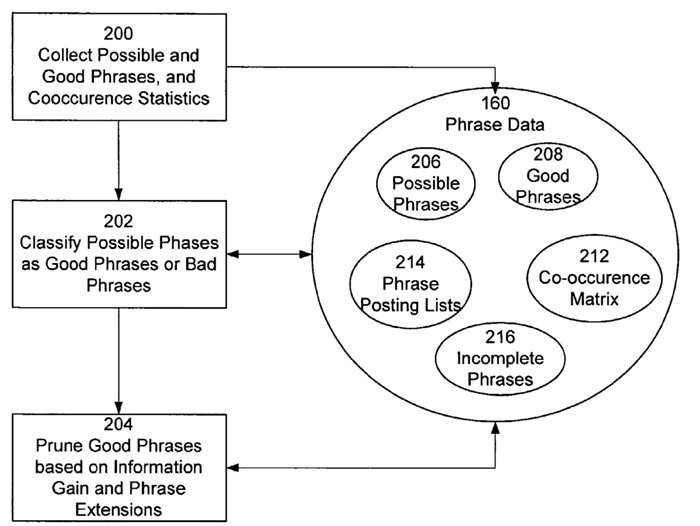
Como esse sistema permite que o Google identifique casos de keyword stuffing?
Além de ser capaz de determinar quantas palavras-chave são usadas em um documento específico (obviamente, um documento com densidade de palavras-chave de 50% é um caso de keyword stuffing), o Google também é capaz de medir o número de expressões relacionadas a uma palavra-chave (são as palavras-chave LSI).
Um documento normal geralmente possui entre 8 e 20 frases relacionadas, de acordo com o Google, contra 100 ou até 1.000, para um documento que utiliza métodos de spam.
Comparando as estatísticas dos documentos que usam as mesmas consultas-chave e expressões relacionadas, o Google pode determinar se um documento usa um número maior de palavras-chave e expressões relacionadas do que a média.
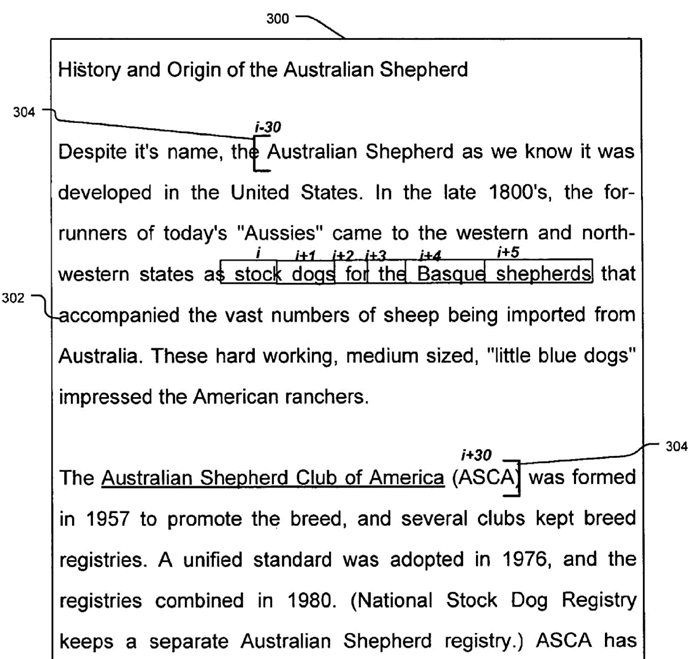
🕵️♂️ Cloaking
A patente em questão: "Systems and methods for detecting hidden text and hidden links" (5 de março de 2013)[3]
Isso permite que um site seja referenciado como algo que não é. Imagine um disfarce que permita a um site se infiltrar nos resultados de pesquisa. Ele só será descoberto se um usuário clicar nele e perceber uma diferença.
Existem várias maneiras diferentes de fazer cloaking em um site. Você pode:
- colocar texto atrás de uma imagem ou vídeo;
- definir o tamanho da fonte como 0;
- esconder links inserindo-os em um único caractere (um hífen entre duas palavras, por exemplo);
- usar CSS para posicionar seu texto fora da tela...
Essas táticas de ocultação permitem aumentar artificialmente o SEO de uma página. Assim, é possível colocar uma lista de palavras-chave não relacionadas ao assunto da publicação no final da página em branco sobre fundo branco.
Na patente, o Google explica que seu sistema pode descobrir esse tipo de truque inspecionando o Document Object Model (DOM).
O DOM de uma página permite que o Google colete informações sobre os diferentes elementos da página. Incluem-se: tamanho do texto, cor do texto, cor do plano de fundo, posição do texto, ordem das camadas e visibilidade do texto.
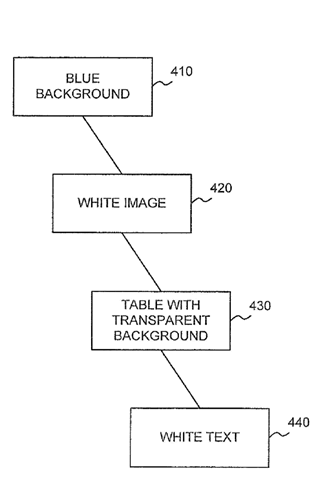
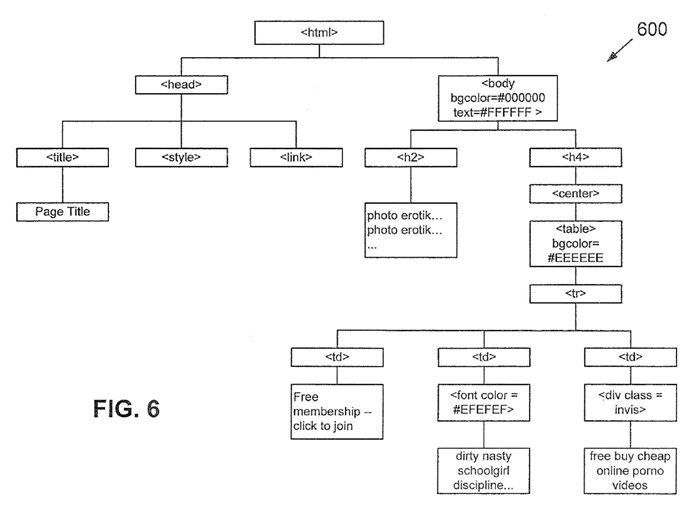
👀 Exemplos de penalidades de SEO relacionadas às patentes do Google
Os erros descritos acima, sejam intencionais ou acidentais, expõem você a penalidades severas.
O Google não leva em consideração o tamanho ou a notoriedade do site e penaliza todos os usuários que violam as regras. Eles até já se penalizaram!
Aqui estão alguns exemplos de penalidades aplicadas a sites renomados.
Rap Genius
O site americano que lista letras de músicas de rap pediu a blogueiros para inserir links apontando para seu site. Em troca, eles prometem twittar as postagens dos blogueiros.
Isso constitui uma fazenda de links e o Google rapidamente penalizou o site. O site foi removido da primeira página de resultados, em todas as expressões-chave - incluindo seu próprio nome! A penalidade durou dez dias.
BMW
A BMW cometeu um grande erro ao decidir usar o cloaking para melhorar seu SEO. Isso aconteceu em 2006 e, mesmo naquela época, o Google conseguiu detectar a infração. Marcas reconhecidas como a BMW não estão isentas de penalidades. Seu site foi desindexado por três dias. Para uma marca desse tamanho, essa é uma penalidade enorme que prejudicou a imagem da empresa.
JCPenney
Compras de links pela empresa JCPenney foram descobertas por um jornalista do New York Times. Ele percebeu que cada uma das páginas estava extremamente bem posicionada. A maioria de seus conteúdos foi removida da primeira página. Essa penalidade durou 90 dias. Seu tráfego caiu mais de 90%. A JCPenney rapidamente demitiu a empresa responsável pelo seu SEO e limpou seu site.
Google Japão
Não é uma piada. O próprio Google se penalizou. Descobriu-se que o Google Japão estava comprando links para promover o Google widget. A penalidade? Seu PageRank foi rebaixado de PR9 para PR5 por um período de 11 meses.
Essas estratégias de SEO podem resultar em penalidades, como rebaixamento do PageRank, remoção da primeira página e até desindexação total do site, dependendo da gravidade da infração.
Ao analisar essas patentes, você agora possui informações cruciais para evitar penalidades do Google. Claro, alguns profissionais de SEO são especialistas em ler nas entrelinhas das patentes e outras recomendações do Google. Assim, suas práticas Black Hat continuam funcionando atualmente. Mas até quando?
Os riscos envolvidos em caso de atualização do algoritmo ou revisão manual dos dados são, na minha opinião, muito altos para continuar agindo dessa forma. Além disso, com o advento da pesquisa por voz e o crescimento das consultas de cauda longa, o excesso de palavras-chave e o cloaking definitivamente não valem mais a pena.
Obviamente, para que sua estratégia de SEO seja rentável, isso requer tempo, dedicação e investimento (em tempo e dinheiro). E especialmente se o seu domínio for altamente competitivo! No entanto, hoje existem técnicas White Hat e respeitosas ao usuário que permitem que você conquiste um lugar na SERP:
- siga as recomendações do Google (especialmente os critérios EAT),
- contrate copywriters treinados em SEO,
- peça ajuda a consultores de SEO que não prometem resultados milagrosos em algumas semanas.
🙏 Fontes usadas para escrever este artigo
Need to go further?
If you need to delve deeper into the topic, the editorial team recommends the following 5 contents:
